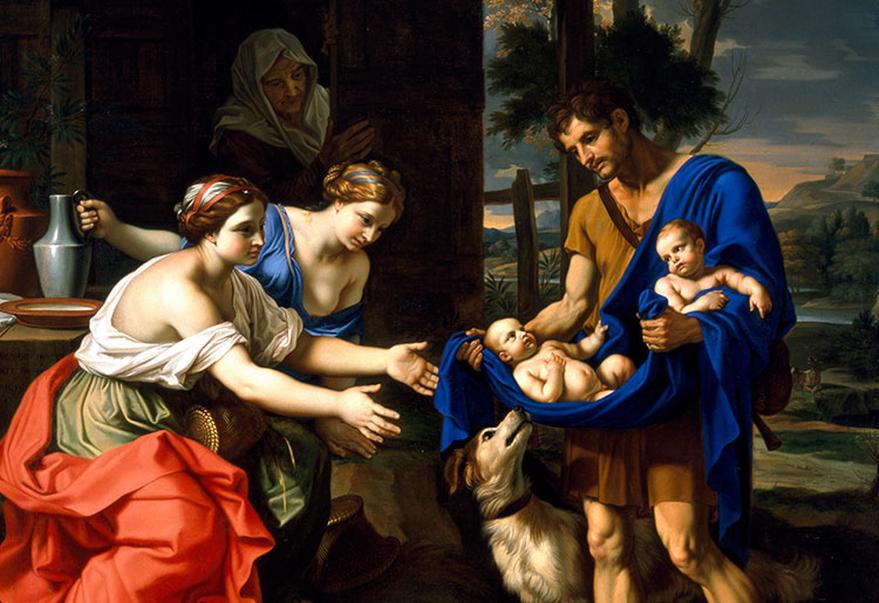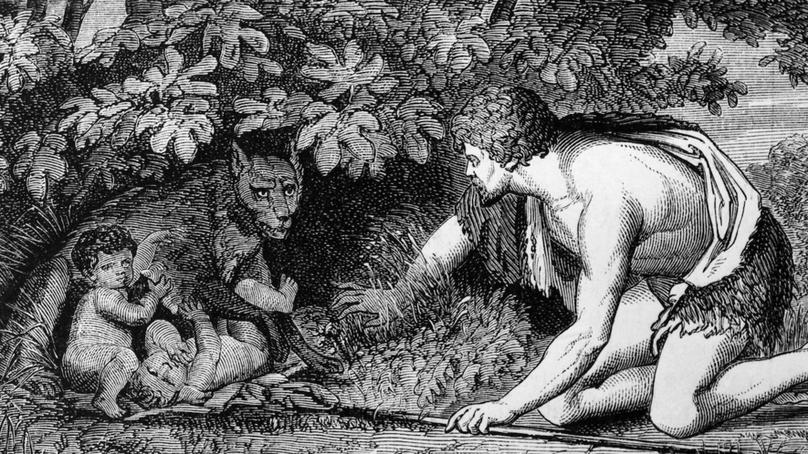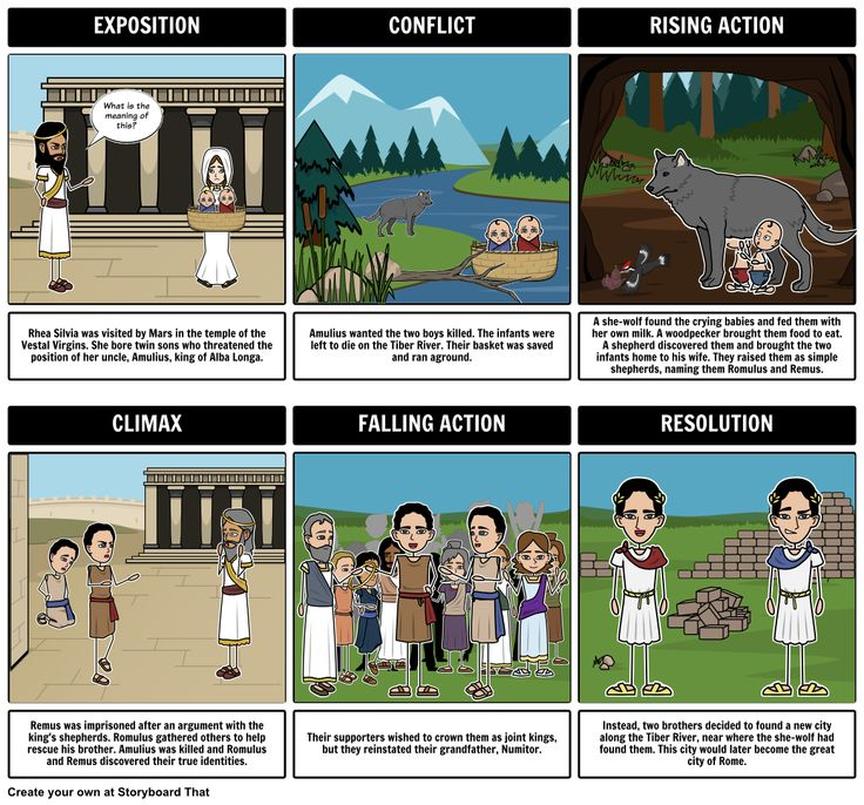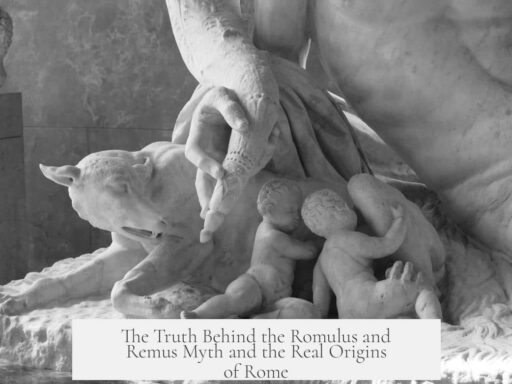The Romulus and Remus myth lacks historical veracity and serves as a symbolic foundation tale crafted for political and cultural identity, while Rome’s genuine origins trace back to early Iron Age settlements and complex social developments that led to city-state dominance in the Italian peninsula.

The story of Romulus and Remus—twins raised by a she-wolf, sons of the god Mars, who founded Rome—is a constructed myth rather than a factual account. Scholars note the clear signs of invention in this narrative. Romulus’s name stems directly from “Rome,” signaling retroactive naming rather than historical fact.
Divine parentage, such as Mars fathering the twins, signals mythological glory, designed to grant Rome a prestigious supernatural origin. The motif of abandoned infants rescued and raised to greatness recurs widely in ancient myths worldwide, lacking unique historical anchoring. This theme symbolizes destiny and legitimacy more than factual biography.

The tale’s political uses are another giveaway. Rome’s early institutions, including the senate and curiae, are attributed to Romulus’ founding acts, functioning as conservative propaganda to justify the existing power structure. Romulus’s mystical ascension to heaven defies typical historical remembrance of rulers, further confirming the story’s mythic nature.
However, the myth may encode collective memory of early events. It signals the Romans’ awareness of a foundational moment and the importance of leadership in Rome’s emergence. It reflects early social and political consolidation without literal accuracy.

The genuine origins of Rome require clarifying what “origin” means. Historians ask whether this refers to the first settlements, political formation, or a city’s rise to prominence.
City-states were common governance forms in Iron Age Italy. The geography, economy, and technology favored small autonomous settlements. Rome’s growth followed a typical positive-feedback loop: as one city-state gained strength, it expanded military and organizational reach, conquered neighbors, and grew larger and stronger. This cycle produced regional dominance.

Why Rome, rather than contemporaries like Carthage or Capua, prevailed remains unclear. Many historians find the reasons unknowable and secondary. Rome simply gained the upper hand at a critical juncture in this growth cycle, eventually winning regional supremacy.
Archaeological data supports some aspects of Rome’s foundation timeline. For example, the “Murus Romuli” (Wall of Romulus), discovered in 1988 on the Palatine Hill, dates to approximately 725 BC. Pottery found in its foundation matches late 8th-century styles, aligning with traditional dating of Rome’s founding around 753 BC.
Excavations also reveal a gradually expanding Iron Age village with dwellings from the 8th and 9th centuries BC. This physical evidence agrees with a gradual urban development rather than a single founding event.
Rome’s early population was diverse. The legendary invitation by Romulus to foreigners echoes the variety seen in forum burials from the 7th and 8th centuries BC. Burial forms include Villanovan and Latial cremations alongside fossa grave traditions from more distant regions. This mixture indicates Rome as a melting pot of different groups merging into a unified community.
Some figures from Rome’s regal period may hold faint historical kernels. For instance, Servius Tullius, the sixth king, is linked to the Etruscan Mastarna, a companion of the hero Caelius Vivenna, as described by Emperor Claudius. Etruscan tomb paintings at Vulci from the 4th century BC depict scenes that some interpret as representing early Roman characters, suggesting a complex interplay of legend and historical memory.
- The Romulus and Remus myth functions as invented political and cultural propaganda, not factual history.
- Rome’s true origins lie in evolving Iron Age settlements dating from the 9th and 8th centuries BC.
- Positive feedback loops in regional competition explain Rome’s rise among city-states.
- Archaeological sites like the Murus Romuli support a semi-legendary founding time around 725 BC.
- Rome’s early population was ethnically and culturally diverse, reflected in burial practices.
- Some legendary kings possibly correspond to historical figures filtered through myth and tradition.
The real story of Rome’s origins emerges from archaeology and societal evolution, not from mythic tales. Rome was a process of growth, conquest, and assimilation, rooted in historical developments and regional dynamics. The Romulus and Remus myth represents the Romans’ attempt to explain and legitimize these facts through story.
Is There Any Veracity to the Romulus and Remus Myth? And If Not, Where Do Rome’s Origins Genuinely Begin?
So, was Rome really founded by twin brothers suckled by a wolf? The iconic story of Romulus and Remus has charmed history buffs and casual learners alike for centuries. But when you peel back the layers, it’s clear this tale is more myth than fact. What’s behind this legendary origin? And if the myth falls short, where do historians say Rome truly began?
Let’s dive into the tangled web of legend, archaeology, and politics that surrounds Rome’s beginnings.
The Romulus and Remus Myth: A Clever Invention
The legend reads like something out of a gripping novel: two brothers abandoned as infants, saved by a nurturing she-wolf, raised to greatness, and then, after founding Rome, Romulus ascends to heaven. Sounds epic, right? But here’s the kicker: the story is clearly an invented backstory.
Why? The name Romulus literally comes from Rome itself — not the other way around. That’s a red flag in historical storytelling, a classic case of a myth created to explain a already-known name. Plus, having Mars, the god of war, as their father checks yet another box. Divine parentage is a staple in myths that aim to glorify the founders and justify their rule.
- The twins’ miraculous survival and noble yet humble origins are common mythological motifs worldwide.
- Romulus is credited with founding key institutions like the Senate and curiae. This part reads like political propaganda crafted much later than the story itself.
- The mysterious end of Romulus, who ascends to heaven rather than facing a well-documented death, is unusual for a real ruler and hints at myth-building.
These elements signal that the myth serves more as a symbol, a narrative to unify and inspire the Romans, rather than as a true historical record. Anything beginning with a wolf nanny needs a closer look.
But Was There a Grain of Truth Hidden Within?
Don’t toss the myth completely aside — the Romans probably preserved some collective memory of real early events. The story, though legendary, reflects the Romans’ understanding of their city’s origins and values, even if it’s woven with imagination and later political motives.
The bones of actual historical events might underlie the fabric of myth. Many cultures use such stories to explain complicated pasts. So, think of Romulus and Remus as colorful windows into ancient perceptions rather than literal facts.
Rome’s Genuine Origins: More Complex Than a Tale
Now, where do experts say Rome’s real beginnings lie? The answer isn’t as straightforward as pinpointing a “founding day.” It depends on what you consider Rome’s “origin.”
Is it the first settlement? The emergence of governance? The rise of Rome as a dominant power? Each angle gives a different start point. The Italian peninsula was dotted with city-states because that was the governance type most suited to the technology, economy, and social organization of the time. Rome started as one such city-state, alongside others like Capua and Syracuse.
What made Rome special? Why did it eclipse other cities? Experts argue it boiled down to positive feedback loops. Once Rome grew bigger and stronger, it fielded larger armies and ran more effective governments. This allowed it to conquer neighbors, get bigger, and repeat the cycle — a domino effect of power expansion.
This is why historians find it tough to pin down one specific cause for Rome’s rise. It’s less about a single moment and more about a chain reaction of advantages, luck, and geography.
Archaeological Evidence Provides Clues
Forget the wolf — actual dirt and ruins tell a more grounded tale.
| Archaeological Finds | Implications |
|---|---|
| Murus Romuli (The Wall of Romulus)Discovered in 1988 by Andrea Carandini on the Palatine Hill, dated around 725 BC. | Aligns closely with traditional 8th-century BC founding dates of Rome. Suggests an early fortified settlement existed. |
| Diverse Burial Customs in 7th–8th CenturyVaried burial methods like Villanovan, Latial, and fossa graves。 | Shows a diverse population settling the area, supporting parts of the myth where Romulus invites men from different nations to populate Rome. |
| Historical Figures Possibly Rooted in RealityThe king Servius Tullius, linked to Etruscan hero Mastarna through tomb paintings from the 4th century BC (Francois Tomb at Vulci). | Indicates that some legendary kings might be inspired by real individuals or events from Italy’s complex pre-Roman past. |
Does It Matter What Actually Happened?
Whether Romulus and Remus sired the Eternal City or not, the myth plays a powerful cultural role. It encapsulates Rome’s spirit of strength and divine favor, appealing to identity and unity. But for those craving history, archaeology and cultural context provide the most reliable insights.
Rome’s origins aren’t a neat bedtime story; they are a blend of diverse peoples, gradual urban growth, and strategic advantages that primed it for historical greatness.
Final Thoughts: Myth vs. Reality — And Why Both Matter
In the end, the Romulus and Remus myth is a historical fairy tale inserted into a complex, evolving truth. The story’s motifs of abandonment, divine origin, and political founding serve to unify Rome’s origins in a memorable package. Yet, the actual genesis of Rome is the result of socio-economic and geographic factors over centuries.
So, is there any truth in the myth? Only in how it reflects the Romans’ desire for a meaningful past rather than in its literal details. The founding of Rome genuinely begins with small Iron Age settlements that blossomed into a powerful city-state by the 8th century BC.
Next time you hear the tale of the wolf-suckled twins, consider it not as history but as a mythological lens on early Rome’s diverse and fascinating roots. And when it comes to the gritty beginnings, trust the walls and graves that whisper stories of real people and real growth.
Curious how other cities blend myth and history? Rome isn’t unique in this, and these tales always reveal something about what ancient people valued most — power, divine favor, and a sense of belonging. What’s your favorite city origin story?




